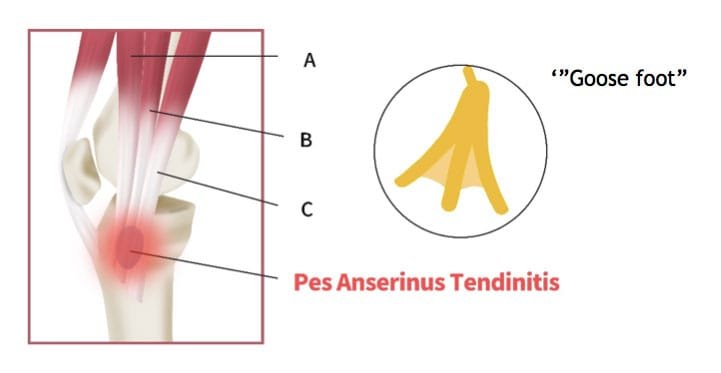

Identifying causes of pes anserine bursitis Stretching the surrounding muscles such as the quadriceps, hamstrings, and adductor muscles may help.Ī therapist may apply electrotherapy such as ultrasound and if treatment is not successful then corticosteroid injections have been shown to be effective.
#Pes anserine tendons professional#
What can a sports injury professional do?Ī doctor may prescribe anti-inflammatory medication such as ibuprofen which may help reduce pain and inflammation. Ice can be applied for 10 minutes every hour initially for the first 24 to 48 hours reducing to 3 or 4 times a day as required. Apply ice or cold therapy to reduce pain and inflammation. Rest and apply the PRICE principles of rest, ice, compression, and elevation. The aim of treatment is to treat the symptoms of pain and inflammation, as well as identify and correct any potential causes of the tendon or bursa inflammation. This is because studies have shown that acute inflammatory cells are not usually present. With long-term, overuse injuries, it is more likely to be degeneration. Tendonitis refers to acute inflammation (itis means inflammation). The word tendinopathy is probably a more accurate term as it describes the degeneration of the tendon rather than specific acute inflammation. Any sport or activity which puts repeated stress on the inside of the knee puts you at risk of pes anserine bursitis or tendon injury. This results in bursitis and/or tendinopathy (sometimes called tendonitis). It is more common in sports such as cycling, running, and swimming, especially breaststroke. The bursa becomes inflamed due to repetitive friction. It lies between the combined tendon and the Tibia. In this area, there is also a bursa, called the anserine bursa. However, they also help stabilise the knee by helping the medical ligament resist valgus (sideways) forces. The main function of the three muscles is to assist in flexing (bending) your knee. They all attach together to the tibia (shin bone) on the inner part of the lower knee. The Pes Anserine, also known as pes anserinus or the goose’s foot is the combined tendon of the semitendinosus muscle (one of the hamstrings), Sartorius and gracilis.Įach of the three muscles is supplied by a different nerve:
#Pes anserine tendons crack#
Stress fracture of the tibia – a hairline crack in the tibia bone at the knee caused by repetitive strain and overuse.Medial cartilage meniscus injury – this is damage to the semi-circular shaped cartilage which provides support and cushioning to the knee joint.




 0 kommentar(er)
0 kommentar(er)
